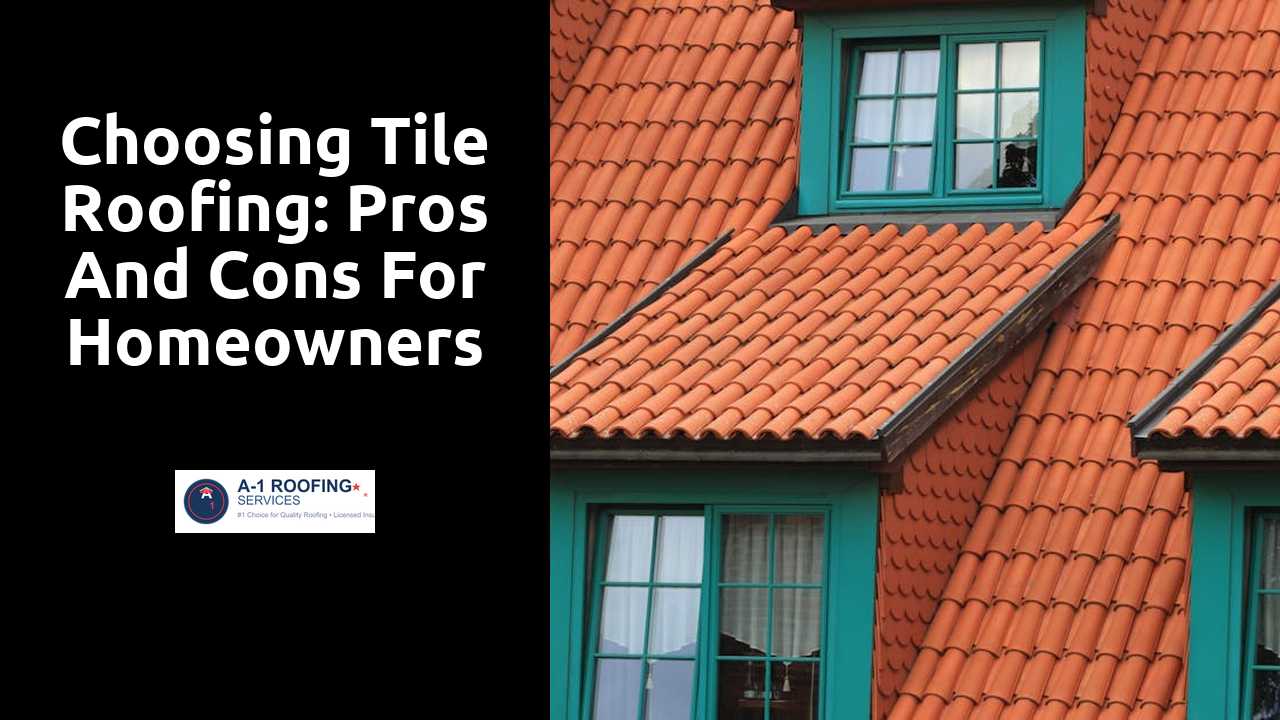
Choosing Tile Roofing: Pros and Cons for Homeowners
Table Of Contents
Installation Process of Tile Roofing
Proper installation of tile roofing begins with a solid structural framework. This ensures that the weight of the tiles is adequately supported. Roofers typically prepare the roof deck by inspection and repair, addressing any underlying issues before laying down underlayment. This material acts as a barrier against moisture and provides an extra layer of insulation. Once the underlayment is in place, the tiles are installed beginning at the roof's lowest point. Each tile must be properly interlocked to enhance stability and prevent wind damage.
The installation process may vary depending on the type of tile being used, whether it's clay, concrete, or a lightweight alternative. Careful attention is essential when cutting tiles to fit around features like chimneys or vents. Adequate ventilation must be considered during the installation to help regulate temperature and prevent moisture buildup. After the tiles are set, a thorough inspection follows to ensure everything is secure and properly aligned. This meticulous approach can help homeowners avoid future issues, providing a long-lasting and attractive roofing solution.
Click here for additional info.
Key Steps for a Successful Installation
Proper planning is crucial before beginning the installation of tile roofing. Homeowners should first assess their roof structure to ensure it can support the weight of tile materials. Engaging a qualified contractor will streamline the process. They can determine if any structural reinforcements are necessary to handle the increased load. Additionally, a careful measurement of the roof area will help in calculating the amount of tile needed, along with the appropriate underlayment and flashing materials.
Once the planning phase is complete, the next step involves preparing the roof deck. This includes making any necessary repairs to existing plywood or sheathing. A moisture barrier should be installed to protect against leaks, providing an extra layer of defense. Proper ventilation is also vital for long-term performance. Tiles are typically laid in overlapping rows, starting from the bottom edge of the roof and working upwards. Accurate alignment ensures not only a visually appealing result but also encourages effective water runoff.
Maintenance Requirements for Tile Roofing
Tile roofing requires regular attention to maintain its appearance and longevity. Homeowners should perform routine inspections to identify any broken or cracked tiles. This proactive approach allows for early detection of potential issues. Cleaning the roof at least once or twice a year helps prevent the accumulation of debris which can lead to water pooling and subsequent damage.
Additionally, the condition of the underlying structure needs assessment during maintenance checks. Ensuring that flashing and seals are intact is essential for preventing leaks. Proper care extends the life of the roof and preserves its aesthetic appeal. Scheduling professional inspections periodically is beneficial for maintaining optimal performance and structural soundness.
Routine Care and Inspection Tips
Regular inspections play a crucial role in maintaining the integrity of your tile roofing. Homeowners should take the time to check for any cracked or broken tiles, as these can lead to leaks and further damage if left unaddressed. It's also important to ensure that the flashing around chimneys, skylights, and vents is secure and in good condition. Removing debris such as leaves and branches from the roof surface can help prevent water pooling and moss growth.
Routine maintenance should include cleaning the gutters to facilitate proper water drainage. Clogged gutters can cause water to overflow and potentially damage the roofing system. Additionally, consider scheduling professional inspections at least once a year. Experts can identify hidden issues that may escape the untrained eye. Timely repairs will extend the lifespan of the roof and maintain the home's overall appearance.
Potential Disadvantages of Tile Roofing
Tile roofing carries certain drawbacks that homeowners should consider. One significant concern is the weight of the tiles. Many roofing structures may require additional reinforcement to safely support the heavy materials, leading to increased installation costs. In some cases, homes without suitable structural support might not even be eligible for a tile roof, limiting options for homeowners who desire this style.
Another disadvantage is the potential for breakage or damage during extreme weather conditions. High winds or hail can cause tiles to crack or become dislodged, which necessitates careful monitoring after severe storms. Repairing individual tiles can be more challenging and expensive compared to other roofing materials, often requiring specialized contractors familiar with tile roofing systems.
Weight and Structural Considerations
Tile roofing is significantly heavier than other roofing materials. Homeowners must ensure their homes can support the additional weight before installation. This may involve consulting with a structural engineer to assess the existing framework. If the house isn't adequately reinforced, additional modifications may be needed, which can add to the overall cost and complexity of the project.
The weight of tile roofing also affects installation methods and the choice of roofing contractors. Some professionals may not have the experience or equipment necessary to handle heavier materials, potentially limiting options for homeowners. Proper insulation and ventilation must be considered to prevent issues down the line. Addressing these factors is crucial to ensure the longevity and performance of the tile roofing system.
Related Links
Exploring the Benefits of Wood Shake RoofingAdvantages of Metal Roofing in Residential Applications